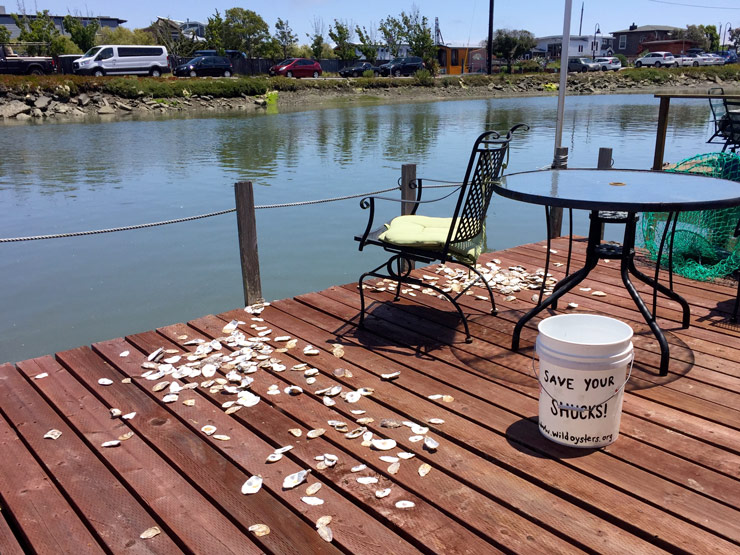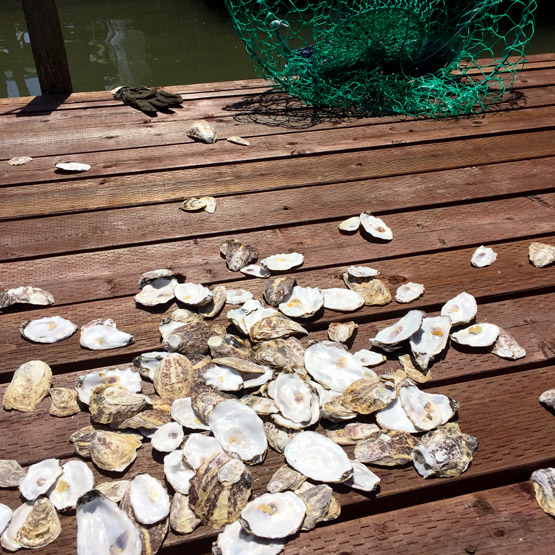A history of the San Francisco Bay could be told through the story of oysters. Native oysters were once in abundance, and their shells—found in the middens of Native Americans—date back to about 7,000 years ago. In the 1850’s people began bringing Olympia oysters to the Bay, from Puget Sound in Washington. These are smaller than East Coast or Japanese varieties of oysters, so when settlers started coming west, they brought barrels of their favorite bi-valves with them to raise in the San Francisco Bay. Unfortunately, all of the oysters—those native as well as those introduced to the San Francisco Bay—were wiped out by silt and toxins from the gold mining taking place upriver of the Bay.
There is a movement to bring back native populations of oysters. They won’t be a food source anytime soon—native oysters grow very slowly and are much smaller than the introduced oysters. However, they are vital to the health of the San Francisco Bay. They filter algae and sediments so that underwater plants can grow and they help create habitat for fish, crabs and birds. Oysters also contour the bottom of the Bay and help protect against storm surge and sea level rise.
Scientists, government agencies and non-profits are working to create oyster reefs in the San Francisco Bay. These are often constructed using the shells of oysters that have been commercially grown and eaten. A new non-profit, the Wild Oyster Project, is a program to recycle oyster shells for the purpose of creating oyster reefs in the SF Bay, as well as recycling the shells for other uses. Volunteers are needed to pick up shells from Fish Restaurant on Sunday evenings, give them a quick clean, and once a month take them to a modern-day midden at NatureBridge in Ft. Cronkhite.
For more information visit: Wild Oysters or email marty@wildoysters.org.



